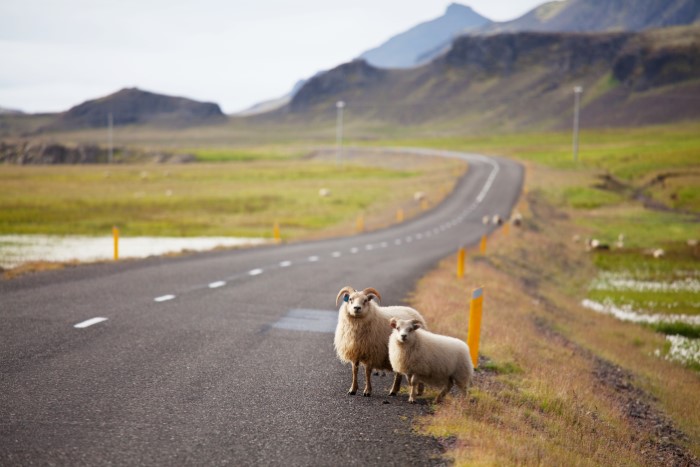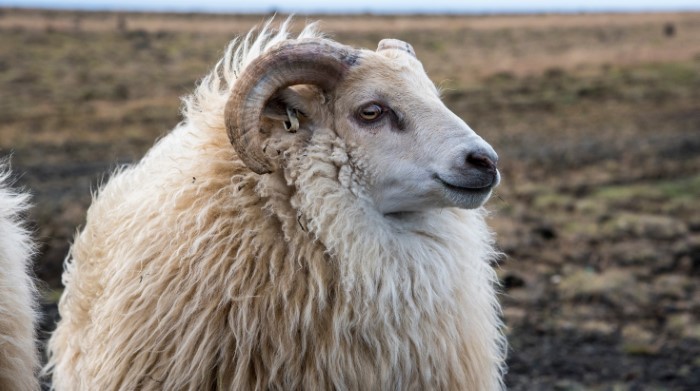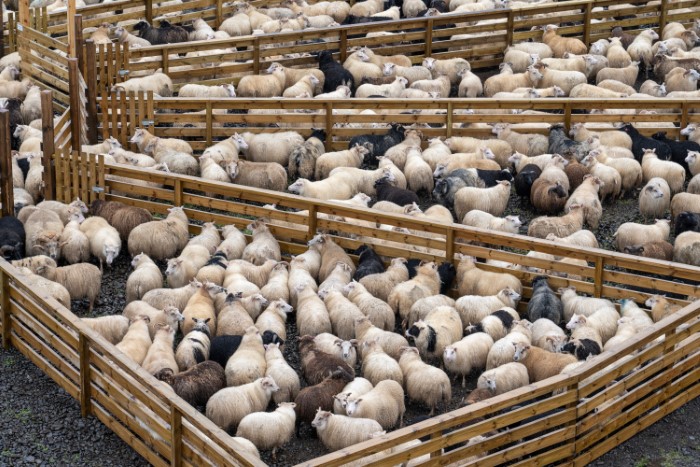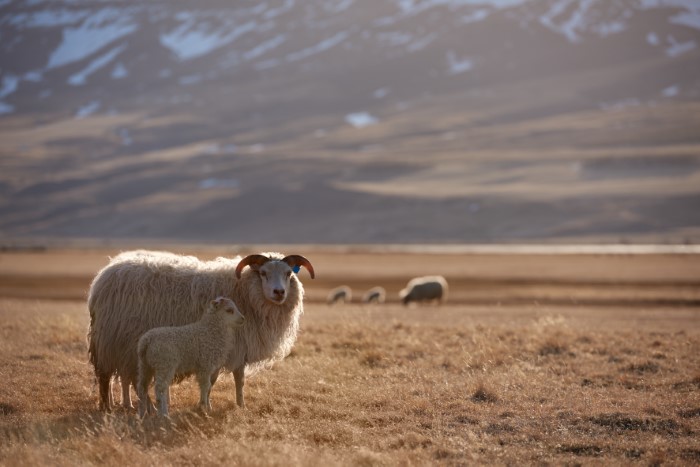The size of Iceland’s sheep population has decreased dramatically over the past few decades. But before you reach for your passport and rush over here to see them before they’re gone completely, let us reassure you that despite the decline, there are still far more sheep than people.

Take care when driving in Iceland in summer and fall as sheep are roaming wild.
The largest concentrations are in the north, particularly the Westfjords, home to around 112000 of the 416000 counted in 2019. In contrast, South Iceland’s ovine population numbered only 2200, compared to more than 30000 cows. We say point your rental car north, but not before you’ve read our guide to everything you need to know about the Icelandic sheep.
Origins
The only land mammal native to Iceland is the Arctic fox: like horses, sheep were introduced by early Norse settlers. The animals were essential to their survival, a source of meat and also wool. The breed they chose was the hardy Northern European short-tailed sheep and, as the import of sheep is prohibited under Icelandic law, it remains the only breed in the country.
What do they look like?
One of the things you’ll notice as you drive around Iceland is that the sheep vary in colour. You’ll see brown and black sheep; if the animal looks grey, that’s because it has a white undercoat and if it looks white, that’s because it’s missing the vital pattern gene that gives the fleece its colour.

A portrait of a beautiful Icelandic sheep.
It’s a double fleece, with a shaggy outer coat (the tog) and a closer undercoat (the þel) which helps keep the sheep warm during the cold Icelandic winters and keeps some of the rain and snow out. The presence of horns doesn’t indicate a male as ewes can have them too. To tell them apart from a distance, typically rams are around twice as heavy.
Are they wild?
You’ll often see sheep grazing pastures close to the road. Indeed by May, when there are lambs around, it’s even more important to keep a watchful eye on where the ewes are in case their offspring make a dash for their mother right in front of you. Most ewes have two (sometimes even three) so it’s best to be especially vigilant and give them plenty of space.
But even though there’s often no human in sight, let alone a farm, that doesn’t mean Icelandic sheep are wild. Come in September and you’ll see what’s known as the réttir, when sheep are rounded up by the local community. Visitors can join in too. The sheep are sorted according to their ear markings as they come down from summer pastures and herded into pens ready to be tucked up by each farmer somewhere warmer for the winter.

Every September sheep are rounded up all around the country.
What are they used for?
Unless you’re a vegetarian, you’ll most likely enjoy some tasty Icelandic lamb during your stay. It’s common on most restaurant menus, for instance, served roasted, grilled or as kjötsúpa, a delicious meat and vegetable soup. Less prevalent (some would say fortunately) is a speciality called svið, which is half a sheep’s head, boiled without the brain and served with the tongue and eye. It’s traditionally served at the midwinter festival called Þorrablót.
The sheep’s fleece is also an important commodity. You’ll see sheepskins and woollen blankets in stores all over the country. The yarn, lopi, is soft and cosy, as you’ll find out if you try on a lopapeysa. This Icelandic sweater sports a distinctive design around the yoke which in recent years has made it one of Iceland’s most popular souvenirs.

Sheep in Iceland are as much a part of the countryside landscape as are the country’s lava fields, canyons, glaciers and beaches. As you drive around, you’re sure to see some.
If you liked this article, you might also want to read our article about Icelandic horses.
We at Hey Iceland are your local travel agents. We know everything there is to know about Iceland, where to stay, what to do, not-to-be-missed experiences, and local services not known by many travellers. We believe that we are your best option when planning a trip to our beautiful country.